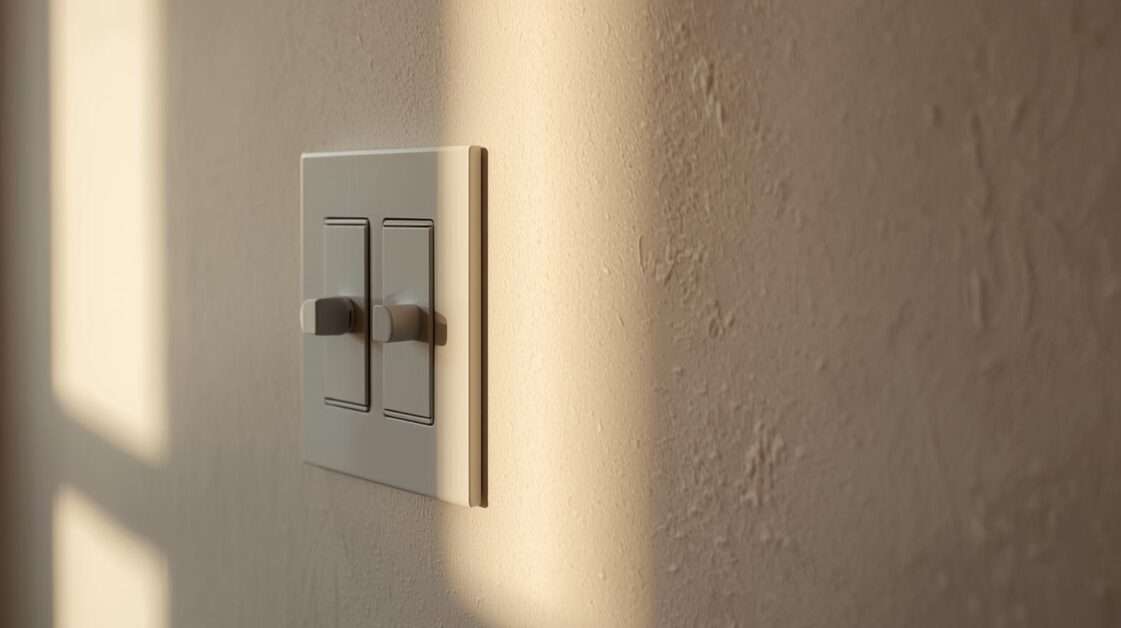
When you think about cleaning your home, there are the obvious spots: countertops, floors, sinks, and bathrooms. But what about the tiny, unassuming objects you touch every day? Light switches are among the most commonly touched surfaces in a household, yet they are often overlooked during cleaning routines. In busy homes across Carson, these small fixtures can quietly collect germs, bacteria, and grime. So how do you keep them clean without damaging them? Let’s break it down.
Understanding the Bacterial Hotspots in Your Home
Light switches, especially those in high-traffic areas like kitchens, bathrooms, and entryways, are touched multiple times a day by everyone in the household. If you have kids, guests, or pets, that number skyrockets. Unlike toilets or sinks, which people instinctively associate with cleaning, switches tend to go unnoticed despite harboring equal—or greater—levels of bacteria.
In Carson’s warm climate and bustling neighborhoods, homes tend to have higher rates of pollen, dust, and skin particles. Combine this with finger oils and food residues, and you’ve got the perfect breeding ground for bacteria. Studies have shown that light switches can contain more bacteria per square inch than toilet seats. Shocking, right?
Why Regular Dusting Isn’t Enough
Wiping down a light switch with a feather duster or dry cloth might remove the visible dust, but it does little to disinfect. To truly sanitize your switches and keep bacteria at bay, you need to approach this task with a bit more strategy.
Start by turning off the electricity to the area you plan to clean. While the risk is low, it’s always better to be safe when dealing with electrical fixtures. Next, use a slightly damp microfiber cloth with a mixture of warm water and a few drops of dish soap. Avoid using sprays directly on the switch; instead, spray onto your cloth.
Once the surface is wiped down, apply a disinfectant wipe or a cloth dampened with isopropyl alcohol (at least 70%) to kill bacteria. Let it air dry completely before turning the power back on or using the switch again.
Daily Habits That Help
Incorporating a few habits into your cleaning routine can dramatically reduce bacteria on switches:
-
Wash your hands after meals and outdoor activities.
-
Assign specific days of the week to disinfect switches in different rooms.
-
Use natural light during the day to reduce the need for constant switch use in sunlit areas.
-
Encourage household members to be mindful of cleanliness.
These simple adjustments can help keep your switches—and your home—healthier over time.
Light Switches and Allergies: A Surprising Connection
Residents in Carson who suffer from seasonal allergies or asthma may be unknowingly triggering symptoms through bacteria and allergens on light switches. Dust mites, pollen, and pet dander can all accumulate on switches. If a family member experiences unexplained symptoms despite general home cleanliness, this may be the culprit.
Professional Cleaners Can Make a Difference
While it’s easy to overlook these small details in your daily routine, a professional house cleaning service in Carson can help you stay ahead of bacteria buildup. Companies that prioritize thorough, detail-oriented service often go beyond the basics. For instance, light switches, door handles, and other commonly missed areas are routinely sanitized as part of a deep cleaning.
Not every cleaning provider includes these small touches, so it’s important to choose a service that does. If you’re booking a one-time cleaning or moving into a new home in Carson, consider requesting a detailed sanitation focus.
What to Watch For: Signs of Dirty Switches
Some visual cues indicate your switches need more attention:
-
A greasy or oily appearance on the surface.
-
Slight discoloration or staining around the switch plate.
-
A sticky feeling when you flip the switch.
-
A buildup of dust or residue in the corners.
If you spot any of these, it’s time to grab your cleaning supplies.
Eco-Friendly Cleaning for Small Surfaces
If you prefer to avoid harsh chemicals, there are plenty of eco-conscious methods for cleaning light switches. White vinegar diluted with water makes a great antibacterial cleaner. Essential oils like tea tree and eucalyptus also offer antibacterial properties and leave behind a fresh scent.
Just make sure to use minimal liquid and avoid over-saturating your cloth.
Maintaining Clean Switches in High-Traffic Homes
Busy households—especially those with kids or multiple residents—face a constant uphill battle with germs. Here are some tips to manage it:
-
Use color-coded microfiber cloths for different areas of the home.
-
Schedule biweekly deep cleans, especially for shared spaces.
-
Educate kids on basic hygiene, like not touching switches with dirty hands.
-
Consider upgrading old switch plates to antimicrobial versions for extra peace of mind.
From Small Change to Big Impact
Something as simple as cleaning your light switches regularly can make a significant difference in the cleanliness and health of your home. It’s a small, often ignored task that adds up over time.
Carson’s active families and professionals deserve a home that’s not just tidy—but deeply clean. Paying attention to the minor details, like your light switches, can improve your home’s overall hygiene and even your family’s health. The next time you reach for a light, ask yourself: when was the last time you cleaned that?
If you’re considering professional help, a cleaning service that goes beyond surface-level cleaning might be exactly what your Carson home needs. A regular cleaning schedule and a focus on high-touch surfaces like light switches can transform how your home feels day-to-day.
You’ll see—and feel—the difference.